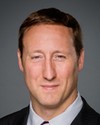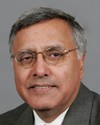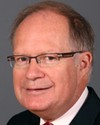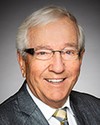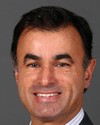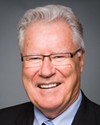Thank you, Mr. Chair and my esteemed colleagues.
This is my seventh appearance before your committee. The first two were as Minister of Foreign Affairs and the subsequent appearances were as Minister of National Defence. It is a pleasure to be back.
This time, I am happy to be accompanied by Mr. Robert Fonberg, Deputy Minister at DND; Mr. William F. Pentney, Associate Deputy Minister at DND; Vice-Admiral Denis Rouleau, Vice-Chief of the Defence Staff; Mr. Kevin Lindsey, Assistant Deputy Minister, Finance and Corporate Services, at DND; and by Mr. David Jacobson, Acting Assistant Deputy Minister, Materiel, at DND.
I am pleased to be here to talk about the supplementary estimates because I know how important your work is in ensuring that Canadian taxpayers get good value for their money.
A great deal of thought and planning go into preparing our initial yearly funding requirements through the main estimates. However, the world in which the Canadian Forces operate is uncertain and unpredictable. We plan, but we must remain flexible in delivering on our mandate.
National Defence has been extremely busy since supplementary estimates (B) were discussed in December. We have gone about our important duties both at home and abroad. But in addition to those responsibilities, we have also undertaken some special tasks over the last few months. Their costs—and other unforeseen financial requirements—are the subject matter that I am here to discuss with you today.
Let me touch on the highlights.
As everyone here knows, last month Canada hosted a very successful Winter Olympic Games in Vancouver and Whistler, B.C. People from around the world came to watch competitors and they witnessed the amazing accomplishments of top athletes who performed spectacularly. It was a great source of pride for our country.
What a lot of people wouldn't know and didn't see was how the Canadian Forces worked to support the RCMP, the Vancouver municipal police, and other partners at the federal, provincial, and municipal levels to make sure that everything happened at the Olympics in a safe and secure manner. The cost of the National Defence contributions to security at the Olympics, and at the Paralympics, which are currently under way, requires supplementary estimates of $17.4 million.
Canadians and our guests from many, many countries have also been able to safely enjoy the spectacular Winter Olympics and the Paralympic Games, and they've thanked us for them. In just one reference, NBC's Brian Williams--not the Canadian broadcaster, but an American broadcaster by the same name--said it best when he stated, “Thank you, Canada....For securing this massive event without choking security, and without publicly displaying a single automatic weapon”.
Our Canadian Forces, like our Olympians, train year-round. They spent a great deal of time extensively away from their families in preparation for these games. They wear a Canadian uniform and a flag on their shoulders. They're proud and they're patriotic. Indeed, we have a lot to be proud of when it comes to their extraordinary public service.
This summer as well, Canada will be in the spotlight again as we host two major international conferences, the G8 and G20 summits in Toronto and in Muskoka. As with the Olympics, the Canadian Forces will again be working alongside the RCMP and other government departments and agencies as part of an integrated security unit. The $11.7 million we've requested for this fiscal year will help us prepare for those two summits that take place this summer.
I'd like to conclude my remarks, Mr. Chair and colleagues, by discussing another place near and dear to the hearts of Canadians, and that, of course, is Haiti. As we speak, the Canadian Forces are wrapping up our military contribution to the Government of Canada's whole-of-government response to the earthquake in Haiti. When the earthquake hit, the Government of Canada was ready to respond in record time, as were the Canadian Forces.
Our response was rapid and effective. The day after the quake, we had boots on the ground within 20 hours. Within two weeks, we had a full task force of 2,000 people up and running. It included seven helicopters, two Canadian battleships, a field hospital, firefighters, search and rescue technicians, and, of course, the Disaster Assistance Response Team.
Our forces have performed their mission and are now returning home after setting the stage for our partners in civilian and non-governmental organizations to now take up the task with the long-term reconstruction of Haiti. We are now seeking $62.3 million in supplementary estimates (C) for this unforeseen and un-budgeted event.
In conclusion, the Canadian Forces have demonstrated time and time again their flexibility, versatility, and capability to respond to a whole array of events. In addition to security at the Olympics and Paralympics, and the Haiti mission that we mentioned, of course, we have another major mission in Afghanistan and the train-up for that ongoing responsibility of the important NATO-led, UN-mandated mission in Afghanistan.
What the Canadian Forces do and continue to do is keep Canadians safe and bring credit to our nation through their dedication and resolve and through their skill. The government recognizes them for their excellence, and we are working hard to give them the support and the equipment they need.
At the same time, we plan and we do our very best, our level best, to use taxpayers' dollars responsibly, by careful planning. And with careful planning, as important as it is, we cannot always account for every circumstance. As I mentioned, we need to be flexible enough to make the adjustments so that the Canadian Forces will have the tools and the means they need to do the important work that we ask of them.
With that, I'll conclude my remarks. Merci. I look forward to your questions.


